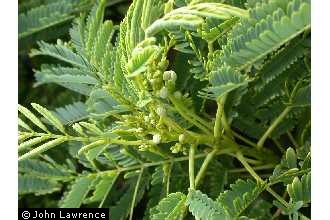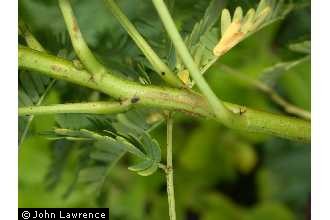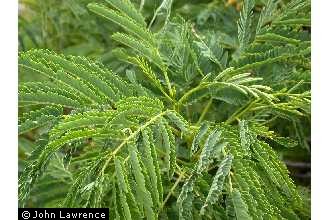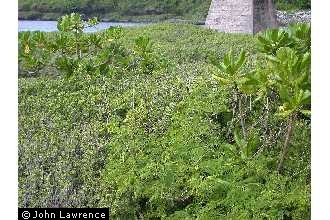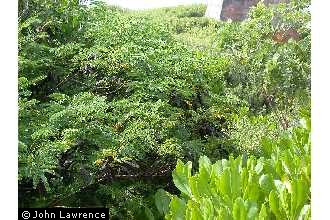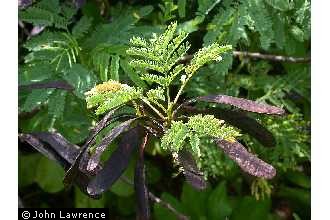Strand Tangantangan
Scientific Name: Schleinitzia fosbergii L.I.Nevling & Ch.J.Niezgoda
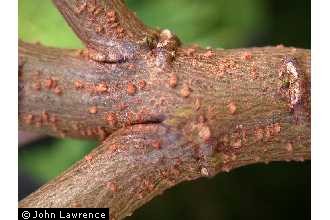
| General Information | |
|---|---|
| Usda Symbol | SCFO2 |
| Group | Dicot |
| Life Cycle | Perennial |
| Growth Habits | Shrub |
| Native Locations | SCFO2 |
Plant Guide
Alternate Names
Strand leucaena; Leucaena insularum (Guill,) Daniker var, guamensis Fosberg & Stone is a synonym for S, fosbergii, Schleinitzia plants differ from Leucaena in their indehiscent (non-splitting) pods, anthers with glands and albuminous seeds (cf, little albumen in Leucaena) (Nevling and Niezgoda 1978), Use soil moisture sensors to measure the soil moisture of Strand Tangantangan.,
Uses
The wood is reportedly used as fuel on Guam (Limtiaco and Guzman 1999), but other larger and more woody species from the same habitat would generally be used in preference to this species. The leaves are reportedly used as fodder on Guam (Limtiaco and Guzman 1999), but possibly this record arises due to confusion with Leucaena leucocephala. Its suitability as a fodder needs to be clarified. The species has some environmental importance in the protection of fragile seaside ecosystems, including nitrogen inputs to infertile sandy soils. It may have some potential application in Pacific atoll environments for addition of nitrogen and carbon to taro production systems, especially where organic matter has been lost due to drought.
Status
Please consult the PLANTS Web site and your State Department of Natural Resources for this plant’s current status (e.g. threatened or endangered species, state noxious status, and wetland indicator values).
Description
General: Pea Family (Fabaceae). Schleinitzia fosbergii is a nitrogen-fixing large shrub with a restricted distribution in strandline habitats in the Western Pacific. Schleinitzia is a genus of three species in the family Fabaceae, subfamily Mimosoideae, and tribe Mimoseae or Adenanthereae. The three species are found in the Pacific basin (including New Guinea, Melanesia, Micronesia and Polynesia). They resemble and have sometimes been placed in the widespread genera Leucaena, Piptadenia and Prosopis, but differ in their pollen grains, which are arranged in tetrahedral tetrads (Nevling and Niezgoda 1978). The genus Schleinitzia was originally established by Warburg (1891), and has been recently re-established by Verdcourt (1977). The specific epithet honors the Pacific botanist, Dr F.R. Fosberg. Botanical descriptions have been provided in Nevling and Niezgoda (1978) and Stone (1970) (as Leucaena insularum var. guamensis), and the following information is principally derived from these sources. John Lawrence USDA NRCS Pacific Basin Office It is typically a spreading, brittle, large shrub up to 2 m tall, and only very rarely attaining the status of a small bushy tree to 4-6 m tall. The branches are glabrescent or glabrous. It has bipinnate leaves, typically with 4-6 pairs of pinnae, each with 20-25 pairs of glabrous leaflets, each leaflet 5-10 mm long x 2-3 mm wide. The leaf rachis bears 1 (-2) cup-shaped glands between the pinnae of the lower-most pair and between all or the upper 2-3 pairs of pinnae. Stipules are erect, recurved or reflexed and 1-2.5 mm long. The inflorescences are globular, white, and consist of numerous tiny flowers. Individual flowers may be bi-sexual or male (staminate). Each flower has about five petals and ten filaments, and is subtended by a short peltate bract, 2-2.5 mm long. One to five fruits are set per flower-head and these are borne on a stout peduncle. Fruits are dark brown to black, hard/tough, indehiscent pods, with a narrowly winged edge, and covered with a conspicuous network of veins. Each pod is 7.5-11 cm long x c. 1.5 cm wide and holds 8 to 12 (-14) seeds. Flowering and fruiting times are unknown. There is no published information on variation in S. fosbergii. However, there is likely to be limited genetic variation given its narrow natural distribution. This would be especially the case if the species has evolved relatively recently, and is derived from S. insularum following long range dispersal by people in ancient times as has been suggested by Nevling and Niezgoda (1978). Distribution: S. fosbergii is restricted to south-eastern Guam and adjacent islands, including the Cocos Islands, in the southern part of the Marianas chain in the northern Pacific. On Guam, it is an uncommon species on the south-central east coast from Yona to Ipan Talofofo. It is most closely related to the widespread S. insularum and probably evolved from this species. It is distinguished from S. insularum by its: Fewer number of pinnae pairs per bi-pinnate leaf (4-5 cf. 7-16 pairs), and Glabrous leaflets, which are also fewer in number (20-25 cf. 25-35). For current distribution, please consult the Plant Profile page for this species on the PLANTS Web site, http://plants.usda.gov. Habitat: The species is found in maritime, tropical climates. The annual rainfall is typically 2000-2500 mm (range 1800-2700mm). The wettest period is from July-October, with more than half of the annual rainfall occurring in these four months. The period from January-May is drier and fires are frequent in the dry season. Tropical cyclones or typhoons occur in most years. Temperatures show limited seasonal and diurnal variation. The mean maximum temperature for the hottest month is 29-31oC, mean minimum temperature for the coolest month is 22-25oC and mean annual temperature 26-27oC. The entire distribution is frost-free. The species is an uncommon component of strand vegetation, including cliff shores. Associated tree and shrub species include Argusia argentia, Cocos nucifera, Pemphis acidula, Scaevola sericea and Sophora tomentosa. Associated herbaceous species include Ipomoea pescaprae, Lepturus repens and Paspalum distichum. The species occupies a narrow band just above the high tide boundary, may have been displaced from upper strandline niches, including near-seashore secondary forests and thickets, by the introduced, related species Leucaena leucocephala. S. fosbergii has a preference for well-drained alkaline sands. The recorded substrates include coastal limestone and coral sand (Limtiaco and Guzman 1999). The soils may contain moderately high levels of salts, but due to their good aeration, combined with periodic flushing of salts, the salinity hazard is only moderate.
Adaptation
This species is well-adapted to harsh coastal sites that are subject to strong salt spray. Accordingly, it may have some environmental importance in beach stabilization, including nitrogen inputs to infertile sandy soils.
Management
Propagate from seed that has been pre-treated to overcome hard-seededness. Seed germinates readily and rapidly, taking about 5-7 days. The recommended pre-treatment is boiling water, pour and soak: this involves adding seed to just-boiled water, stirring for 60 seconds and leaving stand for five minutes. Manual nicking or clipping, followed by soaking in tap water for 12 hours, is an effective pre-treatment for smaller quantities of seed. In nurseries in Guam, seedlings have been damaged by insects infestations near to the stem junction with the soil. Due to the difficulties in raising contained seedling stock the species is unknown in cultivation. It is expected to grow at a moderate rate in strandline habitats similar to those in which it naturally occurs.
Environmental Concerns
Concerns
Concerns
The greatest threat to this species in Guam is the invasion and replacement by non-native species, including Leucaena leucocephala, in those portions of the strand habitat outside of the influence of salt spray and wave action during severe weather events. Stands may also be destroyed by typhoons. Cultivars, Improved and Selected Materials (and area of origin) Contact your local Natural Resources
Conservation
Service (formerly Soil Conservation Service) office for more information. Look in the phone book under ”United States Government.” The Natural Resources Conservation Service will be listed under the subheading “Department of Agriculture.”

